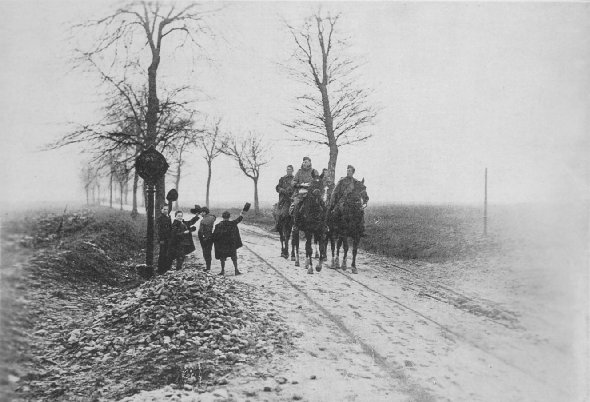Disease, famine and pestilence have always been war's companions. During the fall and winter of 1918, while the American troops were smashing the Hindenburg Line and advancing into Germany, "Spanish Influenza," which had swept through the countries of Europe, struck the eastern shore of the United States and moved rapidly across the continent, affecting nearly one-fourth of the population, with a death rate of nineteen per thousand. The total deaths were approximately five hundred thousand. Because of the great shortage of doctors and nurses, brought about by the war, proper care for all the sick was impossible. Congress voted a million dollars, and the Red Cross appropriated $575,000.00, to fight the scourge.
In Philadelphia and Baltimore, there was an increase of over 700 per cent in the normal death rate. In all the northern cities, heavy snows, extremely cold weather and a shortage of coffins, delayed burials, in some cases, for over a week. The disease was especially virulent in home army camps, where it killed nearly half as many soldiers as fell in battle in Europe. It left in its wake a train of permanent kidney, heart and lung infections. What germ causes the disease is still a mystery to medical science. Until this germ is isolated, combating the infection will be difficult.
The word "influenza" is the Italian word for "influence." The most accepted theory is that the disease was brought to Europe by 200,000 Chinese coolies, who had been brought to France for war work. A plague of a similar form had been raging in China since 1910. In the filth of the battle area, with disease-carrying rats and lice, where the ground was littered with decay, pus and excrement of armies, it is only natural that the disease should become more virulent, and that it should spread and increase in virulency where men were packed together in unsanitary surroundings. The pandemic was especially severe in Spain, from where it gets its sobriquet "Spanish Influenza."
